
Art, creativity and bold visionaries
The first five hundred meters of Prinzregentenstraße in Munich showcase the impressive diversity of the state capital: modern art, nightlife, and laissez-faire. Behind number three, however, lie special treasures – outstanding works from late antiquity to Art Nouveau. The Bavarian National Museum, which has resided here since its founding by King Maximilian II in 1855, is one of the most important art and cultural history museums in Europe. Behind the walls of this magnificent building, European cultural history in Bavaria is presented. A particular focus: the collection of Nymphenburg porcelain from the Wittelsbach family. Despite their fragility, these 18th-century originals have stood the test of time and provide insight into an era in which courtly prestige and masterful craftsmanship were closely linked. Precise craftsmanship, exceptional creativity, and symbolic power can be admired in each object.
-

-
STRANGE AND FASCINATING
Porcelain was a novelty, more like a sensation in 18th-century Europe. No one knew exactly how the white gold, this shining, translucent wonder imported from China, was created. Only very few pieces, but all the more legendary, survived the long sea voyage from Asia. The explorer Marco Polo had named the delicate vessels porcellana , actually the name of the shell of the cowrie. So were these animals needed to produce the delicate shards? Everything was an adventure: finding the right raw materials, firing at extremely high temperatures, precise glazing and painting. And yet the desire was so great that in this era, alchemy, patience, ingenuity, and craftsmanship came together to uncover the arcanum, the secret of making white porcelain.
It's fascinating what was created during this period under difficult conditions: delicate figurines, wafer-thin tableware, and magnificently painted vases—each piece a small miracle of artistry and precision. When you look at some of these surviving works, you can only marvel.
Each object is not only a testament to past times, but also an impressive example of creativity and daring.
-
MASTER OF FINESSE
Among porcelain aficionados, one name is mentioned with particular reverence: Franz Anton Bustelli, master of the Rococo and celebrated figurine sculptor at the Nymphenburg Porcelain Manufactory. The Swiss-born artist created around 150 models between 1754 and 1763—including market women, saints, and noblemen. His main work, however, is the 16 figures of the Commedia dell' Arte.
The artfully crafted group is one of the pinnacles of European porcelain art. With a fine sense of movement and expression, as well as a healthy dose of wit, Bustelli impressively captures Italian improvisational theater in porcelain form. Each figure appears lifelike, their clothing seems to sway, and their expressions speak of intrigue and a love story centered on the couple Isabella and Octavio.
Only in the Bavarian National Museum can a complete and excellently preserved ensemble of these extraordinary figures be seen. -

Photo Credit: Bastian Krack
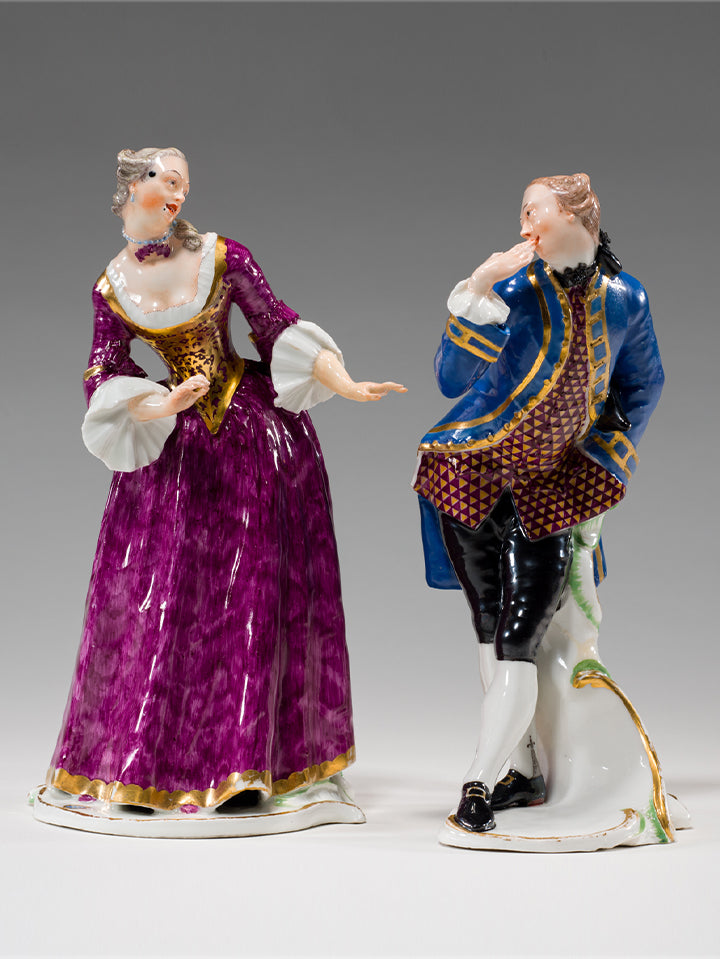
Photo Credit: Bastian Krack
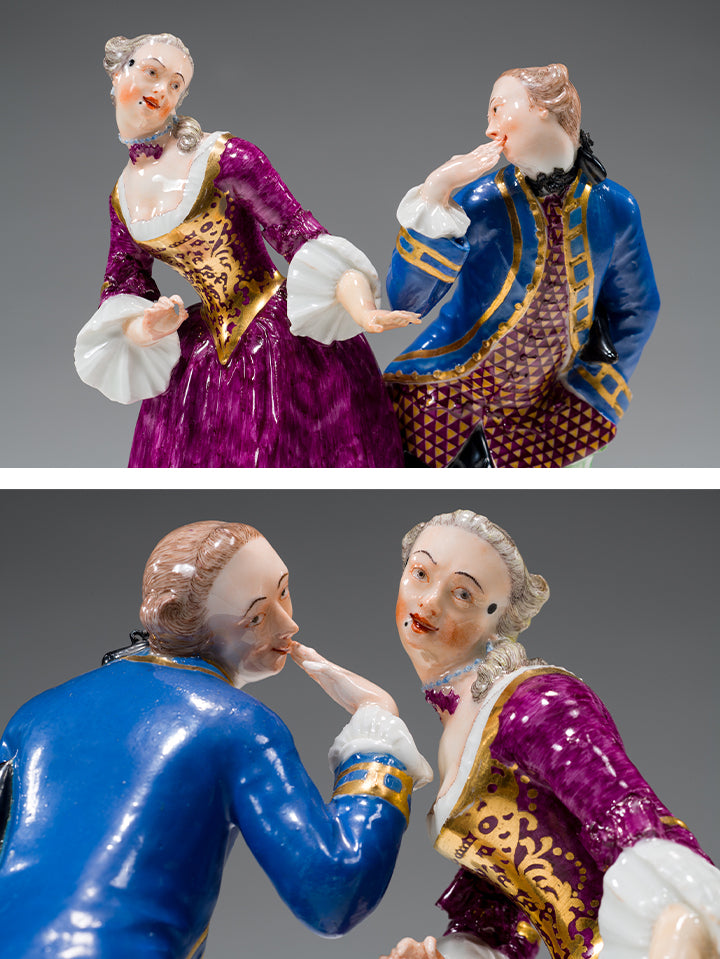
Photo Credit: Bastian Krack
SIGNS OF AFFECTION
Love is a strange game, and this was true even in the 18th century. The story of Isabella and Octavio is told in many different ways in the Commedia dell'Arte, but it is fundamentally based on the narrative of a love affair with obstacles. The innamorati Isabella and Octavio subtly express their feelings for each other with looks and gestures.
Isabella's body language betrays inner turmoil: While she steps back slightly, her gaze remains fixed on Octavio. Her left hand urges him "adagio"—to take it easy. Her right hand gestures toward a ring—a subtle hint that she wants a serious relationship. Her chosen man, Octavio, responds with a kiss, "adoro," an expression of deep admiration. With his legs closely spaced, his upper body tilted, and his left hand in his vest pocket, he appears almost touchingly shy.
Isabella and Octavio's clothing, in matching colors, emphasizes their harmony. She wears a "robe à l'anglaise" with a tight-fitting bodice, a large, square neckline, a narrow waist, and a full skirt. Her flawless, snow-white skin is adorned with beauty spots, so-called "mouches." The black dot next to her mouth is a code for her flirtatiousness. Octavio appears in his "habit à la francaise" with justaucorps, culottes, and waistcoat, the epitome of the gallant gentleman of the 18th century.
It is lastingly impressive how Bustelli succeeds in translating inner conflicts and quiet emotions into porcelain with this couple.
PIONEER OF NEOCLASSICISM
Domenikus Auliczek the Elder, born in Bohemia, traveled extensively—and his works reflect this. After completing his sculptural apprenticeship, he spent time in Vienna, Paris, and Rome before coming to Munich in 1762 and working as a modeler for the Nymphenburg Porcelain Manufactory. Here, in addition to numerous garden sculptures that can still be admired in the palace gardens today, he also created the elaborately designed centerpiece depicting the four continents.
Opulence and keen observation merge into an object depicting the famous continents of the 18th century. Inspired by Gianlorenzo Bernini's Fountain of the Four Rivers, which Auliczek encountered during his student years in Italy, four continents are depicted here as enthroned figures on rocky pedestals, each surrounded by characteristic animals. It is precisely these small, lovingly modeled animal figures that reveal the full sophistication of the centerpiece: the lion, crocodile, elephant, and parrot appear as if they could stride or glide across the table at any moment.
Formally, the centerpiece is reminiscent of the elaborate table fountains that dispensed wine or fragrant water on festive occasions in the 18th century – and with their imagination and technical sophistication, amazed even the most distinguished and well-traveled guests.
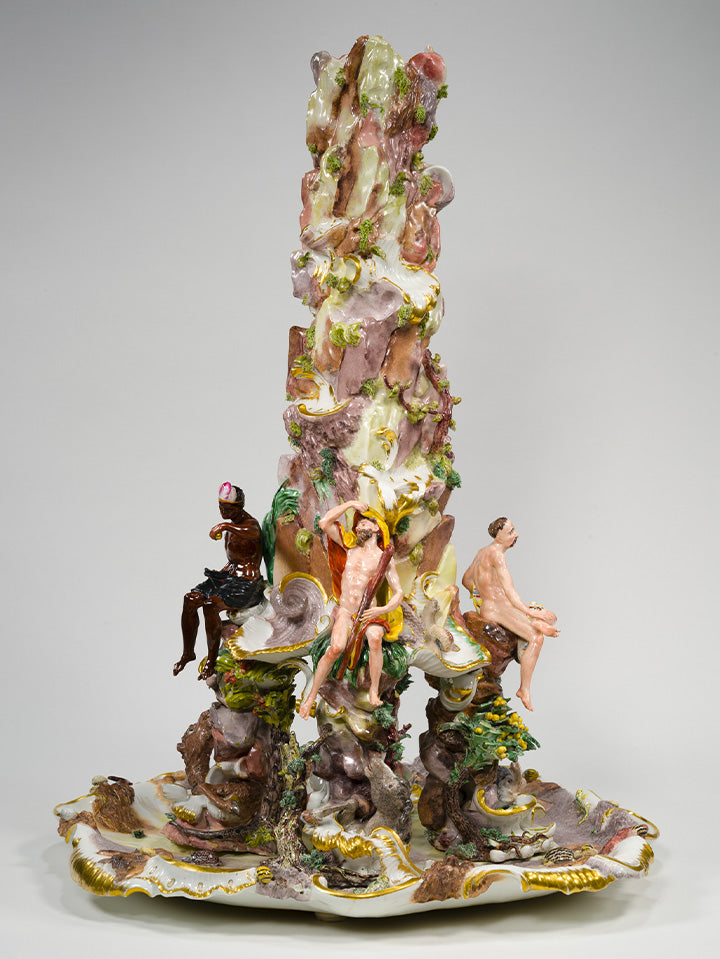
Photo Credit: Bastian Krack
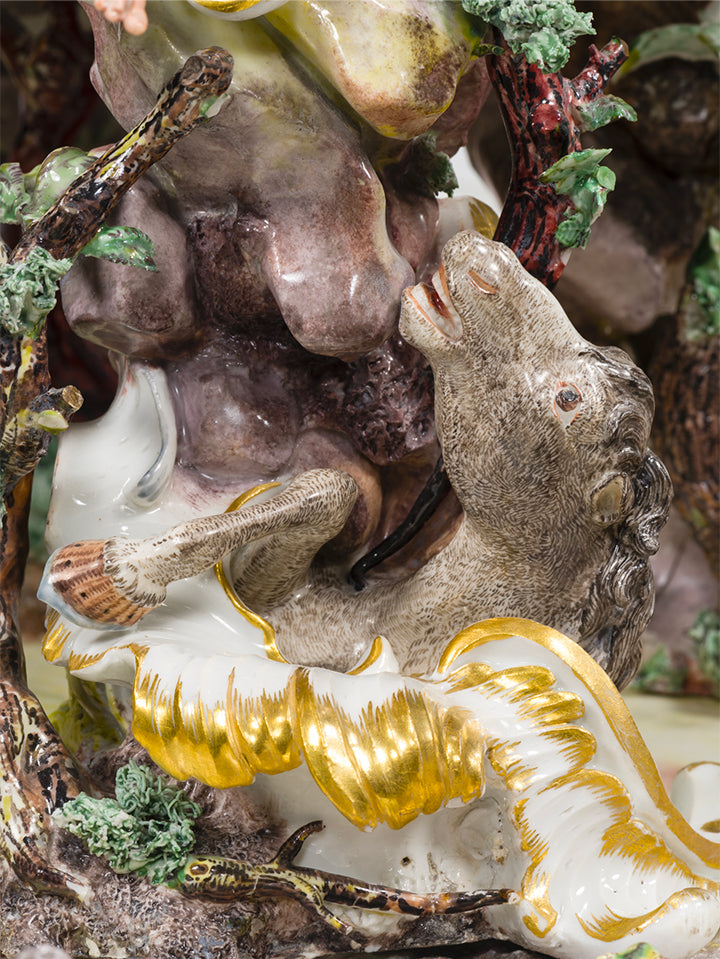
Photo Credit: Bastian Krack
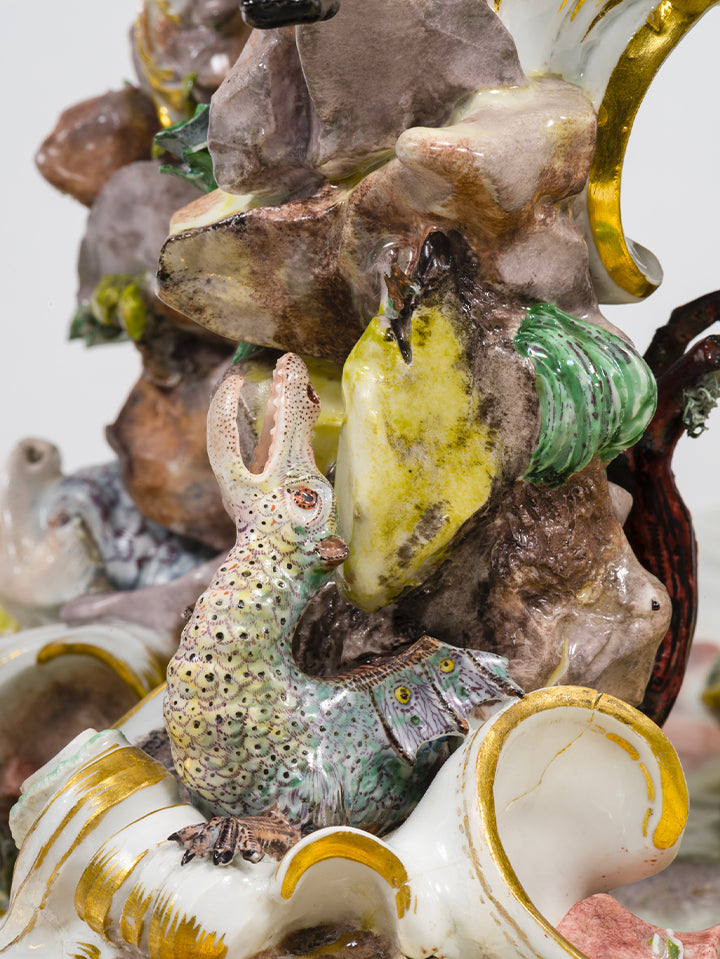
Photo Credit: Bastian Krack
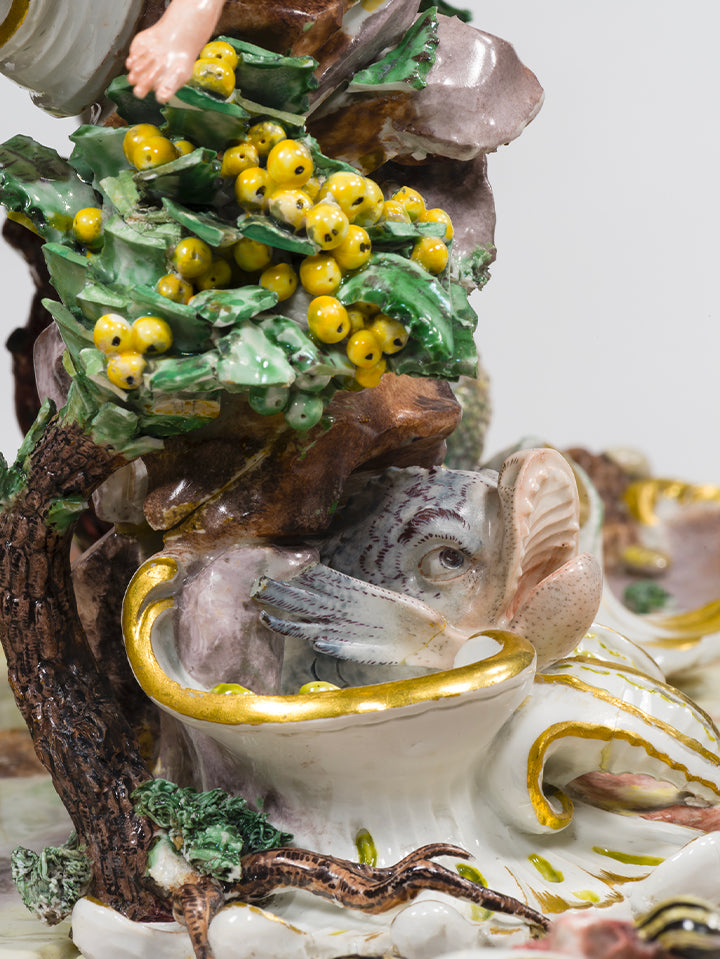
Photo Credit: Bastian Krack
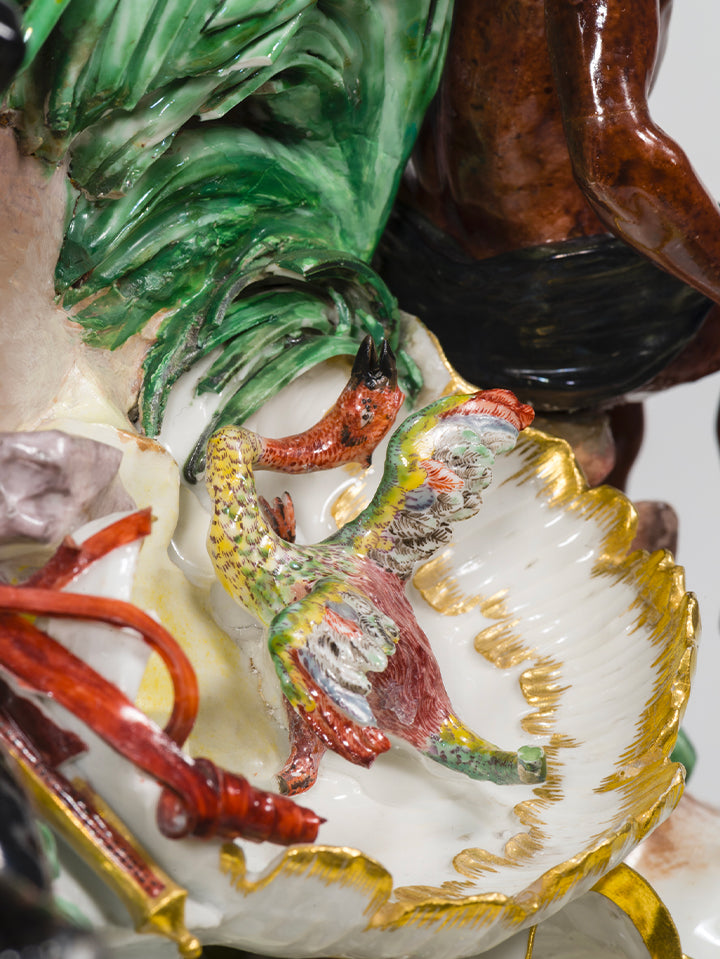
Photo Credit: Bastian Krack
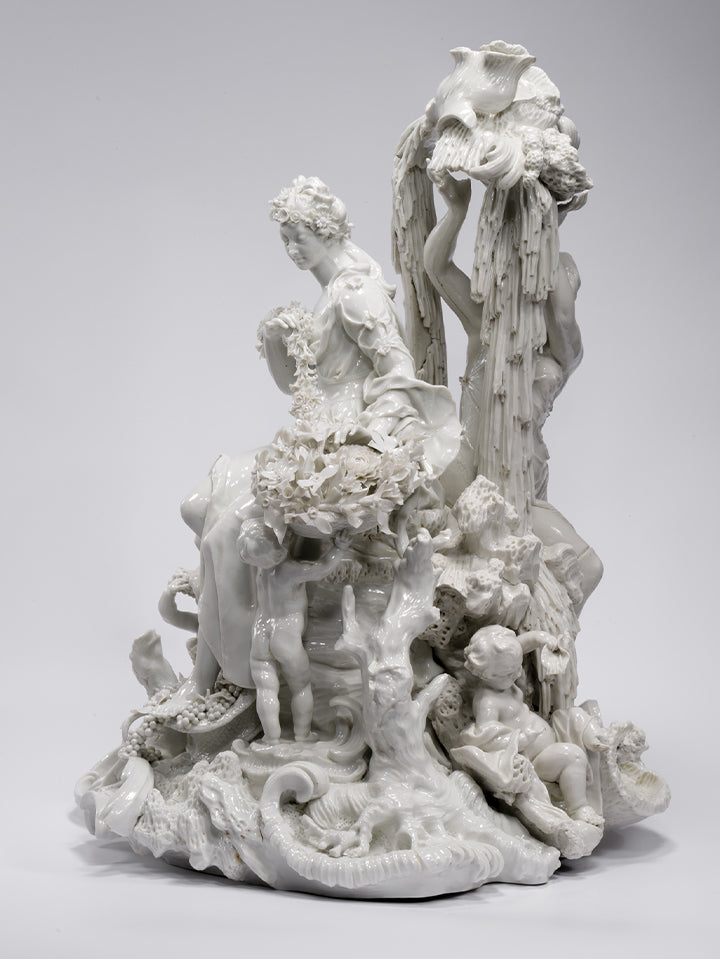
Photo Credit: Walter Haberland
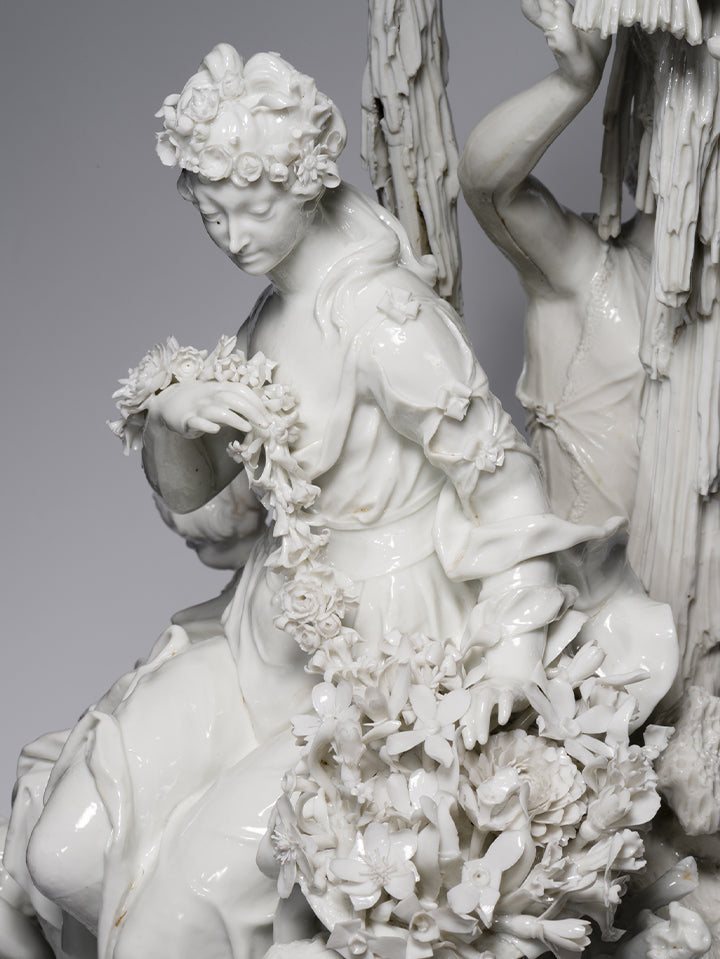
Photo Credit: Walter Haberland
CRAFTSMANSHIP AT PERFECTION
The composition that Dominikus Auliczek modeled as a centerpiece around 1770 is truly divine. Flora, the goddess of flowers, and Amphitrite, ruler of the seas, form a double group that is among his most impressive works. It combines creative imagination with technical mastery in the handling of porcelain.
The Greek goddesses, cherubs, blossoms, and shells impress with their lightness. Everything seems to flow and float. Behind this, however, lies a highly complex process: Porcelain is prone to cracking during drying, shrinks during firing, and is sensitive to the smallest glaze defects. The risk of failure was particularly high with large-scale figures with delicate details and asymmetrical elements.
The fact that Auliczek nevertheless succeeded in firing this group in one piece and with perfect execution is a testament to the highest level of artistry. Without any mechanical aids, relying solely on experience, a steady hand, and precise planning, the brilliant modeler created a work that continues to fascinate today.
A DECOR OF SUPERLATIVES
Biodiversity and opulence have been inspiring exclamations and awes at the table for two centuries. The Munich Court Service from the Nymphenburg Porcelain Manufactory is one of the most precious examples of Rococo courtly dining culture. Created around 1760, with its magnificent floral and butterfly decoration, framed by a lavish gold border, it was elevated to the first Electoral Court Service in 1765 – created in honor of Elector Max III Joseph, the founder of the manufactory. The service is still produced in our workshops today under the name Cumberland and adds grandeur even in modern, minimalist settings.
Each piece of this service is unique: no two floral bouquets are alike, no two butterflies are alike. This diversity is no coincidence, but rather part of the artist's signature. The original creator of this splendor was porcelain painter Joseph Zächenberger, who specialized primarily in flowers and embellished porcelain and palaces with his vibrantly colored and delicate paintings 250 years ago.
This service was a masterpiece both technically and artistically. Even today, Cumberland is considered the most elaborate floral decoration ever applied to porcelain—a veritable firework of colors, shapes, and lifelike details.
The painters of the Nymphenburg Manufactory still create each decoration without a fixed template, but with a keen sense of flora, fauna, and finesse. This artistic freedom is a tradition and lends each piece its own, distinctive character.
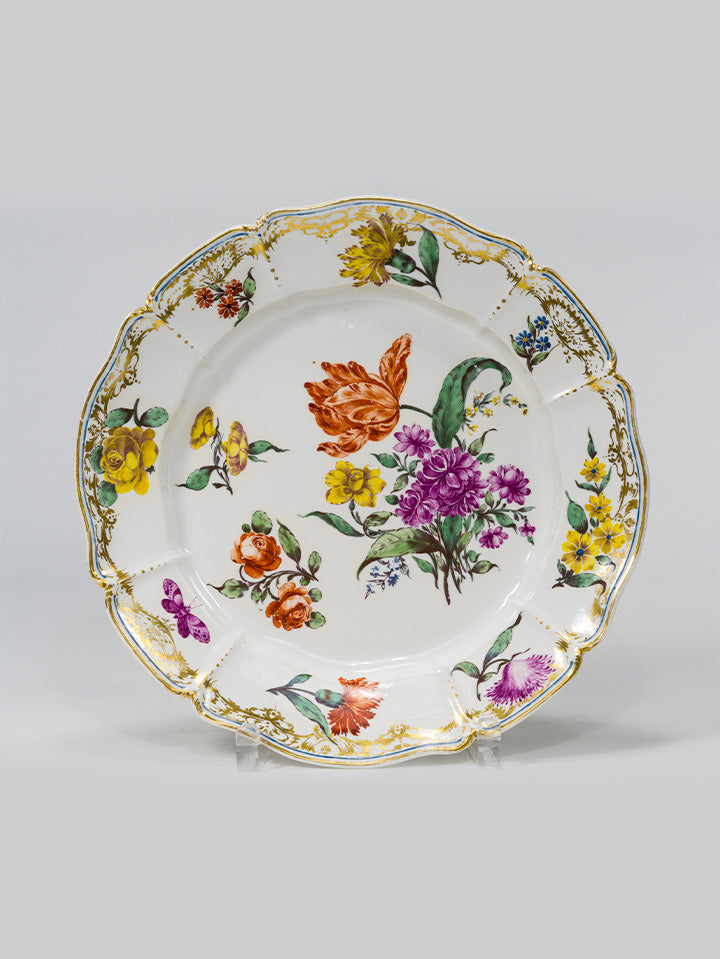
Photo Credit: Bastian Krack
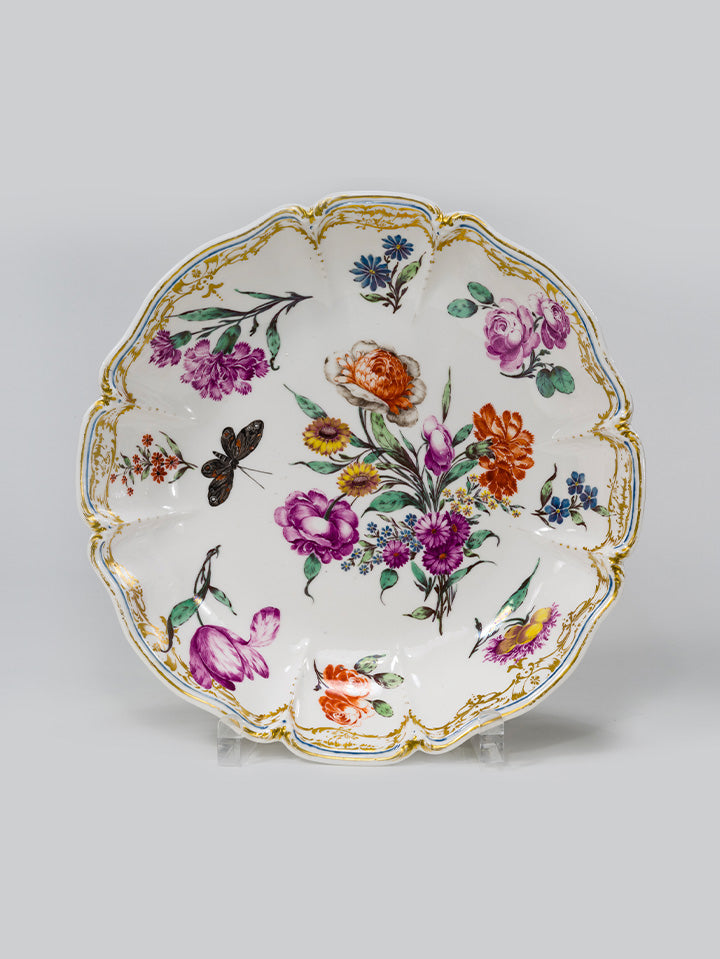
Photo Credit: Bastian Krack
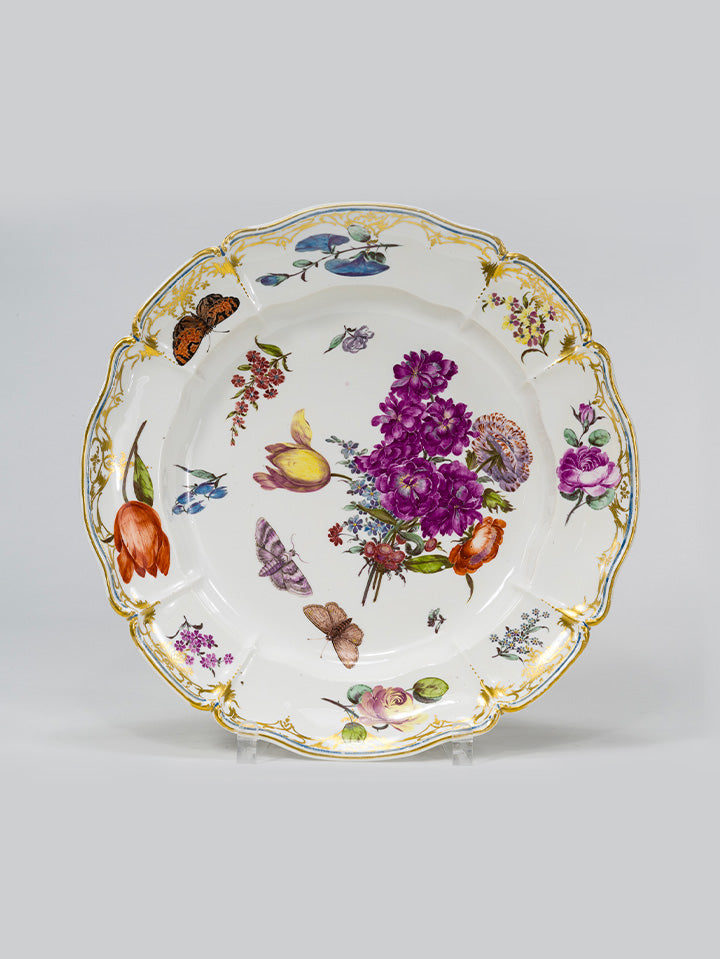
Photo Credit: Bastian Krack
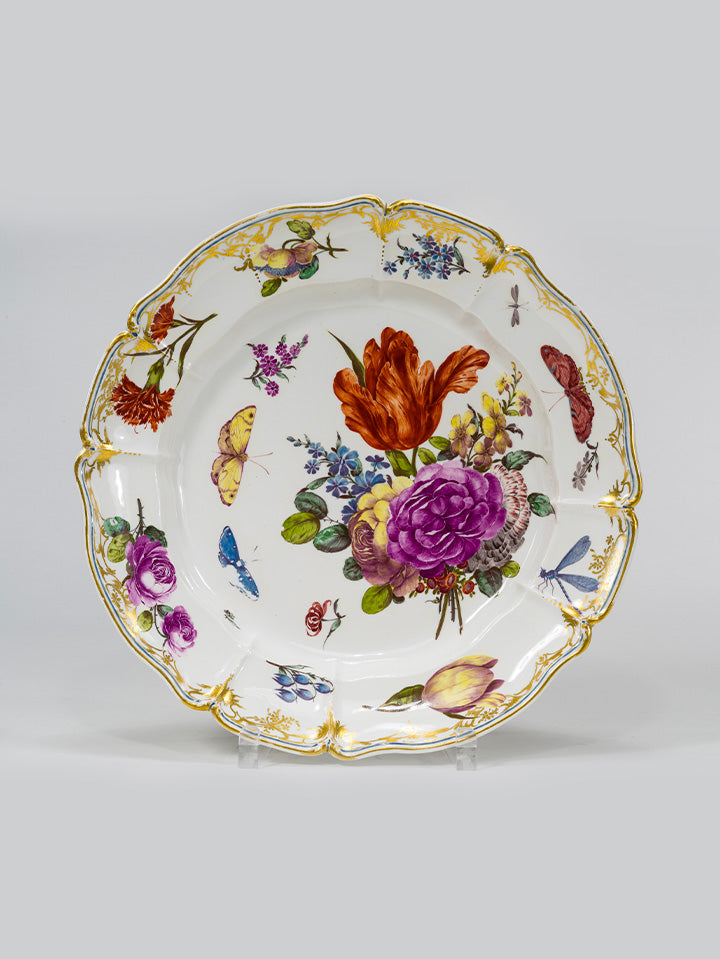
Photo Credit: Bastian Krack
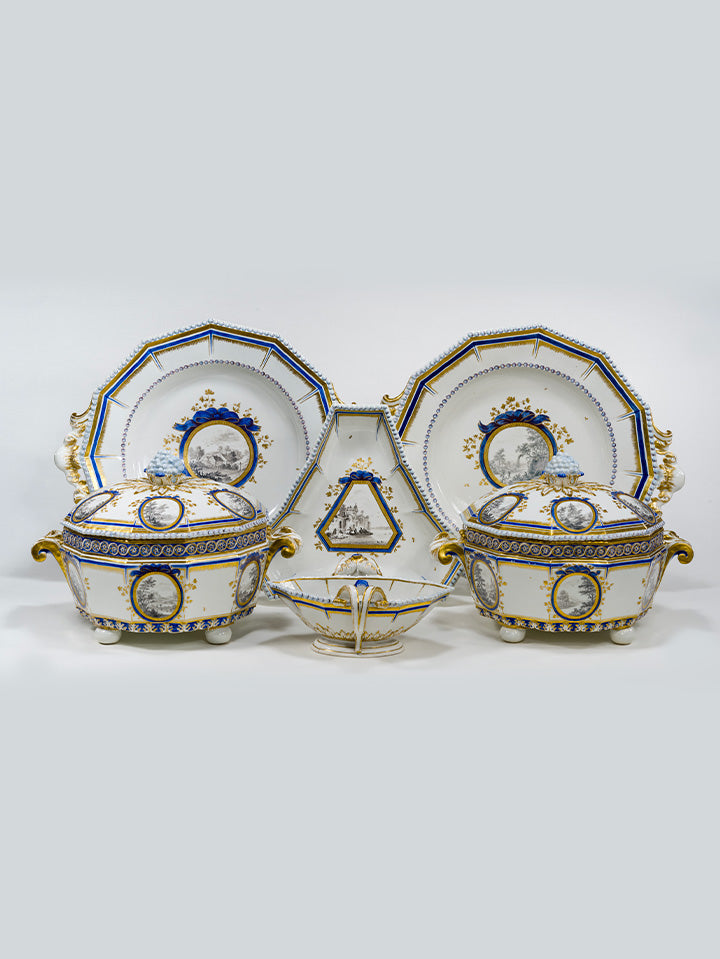
Photo Credit: Bastian Krack
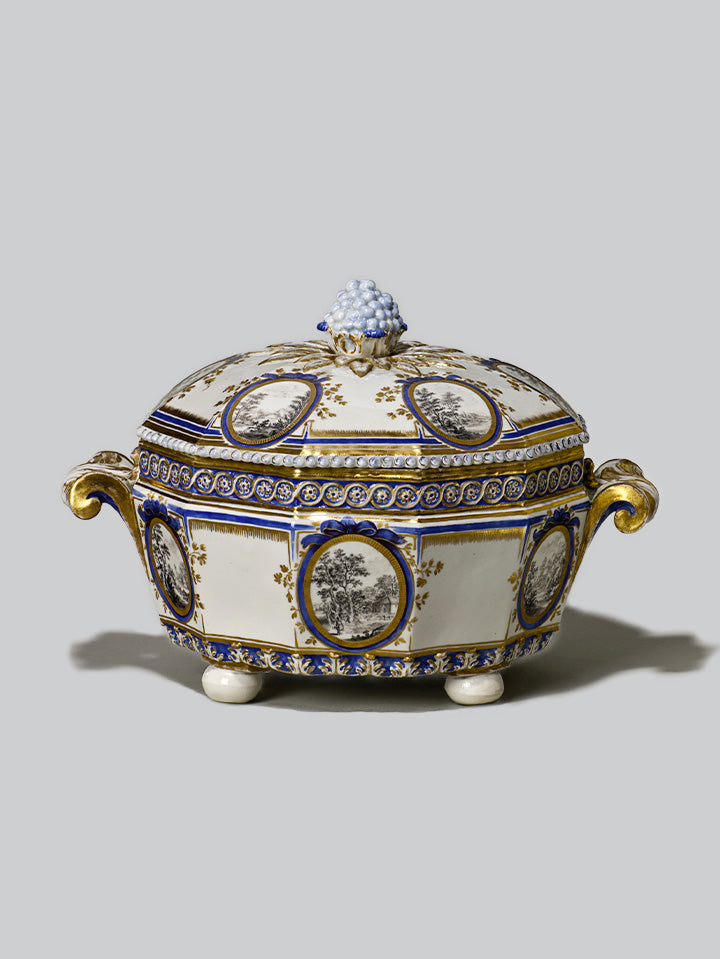
Photo Credit: Bastian Krack
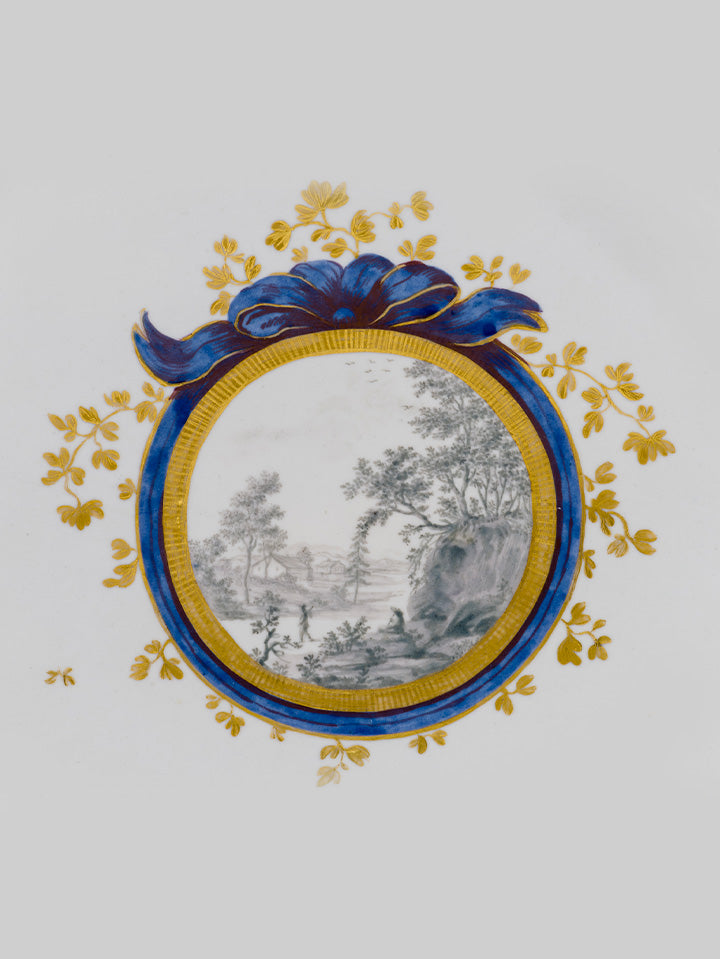
Photo Credit: Bastian Krack
PERL SERVICE
Pearl service models by Dominikus Auliczek the Elder, 1792–95, Nymphenburg Porcelain Manufactory, around 1795
Commissioned by the Bavarian Elector Karl Theodor, Auliczek created an extensive dinner service between 1792 and 1795. It marked the late turn to classicism in Nymphenburg tableware production. Auliczek achieved a major breakthrough. For the first time, tableware pieces were based on a dodecagon instead of the traditional round or oval. The sculptural pearl rim and the restrained decor with idyllic grisaille landscapes in medallions create an elegant effect. At the Bavarian court, this early classicist design was considered so chic that it remained reserved for the Elector until 1900.
Around 350 pieces of the service have been preserved.
- Choosing a selection results in a full page refresh.


